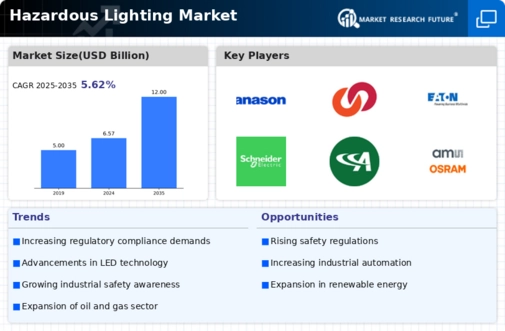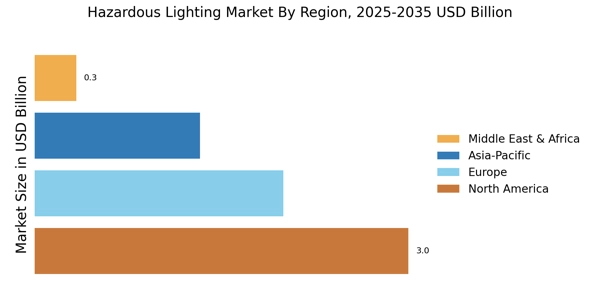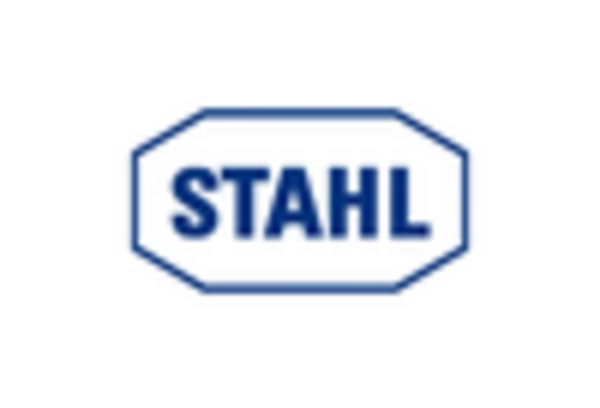Growing Awareness of Workplace Safety
There is a growing awareness of workplace safety among employers and employees, which is significantly influencing the Hazardous Lighting Market. Organizations are recognizing the importance of providing safe working conditions, particularly in environments where hazardous materials are present. This awareness is leading to increased investments in safety equipment, including specialized lighting solutions designed for hazardous areas. As companies strive to enhance their safety protocols, the demand for high-quality hazardous lighting is expected to rise. Market analysts predict that this trend will contribute to a steady growth trajectory for the hazardous lighting market, with a focus on products that offer both safety and efficiency.
Increased Industrial Safety Regulations
The Hazardous Lighting Market is experiencing a surge in demand due to heightened industrial safety regulations. Governments and regulatory bodies are increasingly mandating stringent safety standards to protect workers in hazardous environments. This regulatory landscape compels industries such as oil and gas, mining, and chemical manufacturing to invest in specialized lighting solutions that meet safety requirements. As a result, the market for hazardous lighting is projected to grow significantly, with estimates suggesting a compound annual growth rate of over 6% in the coming years. Companies are now prioritizing the installation of explosion-proof and weather-resistant lighting systems to ensure compliance, thereby driving the overall market.
Focus on Energy Efficiency and Sustainability
The Hazardous Lighting Market is also being driven by a growing focus on energy efficiency and sustainability. Companies are increasingly seeking lighting solutions that not only meet safety standards but also reduce energy consumption and environmental impact. The shift towards sustainable practices is prompting industries to adopt energy-efficient lighting technologies, such as LED systems, which offer longer lifespans and lower energy usage. This trend is expected to enhance the market's growth, as organizations aim to align with sustainability goals while ensuring safety in hazardous environments. Market data suggests that the demand for energy-efficient hazardous lighting solutions could increase by approximately 25% in the next few years, reflecting a broader commitment to environmental responsibility.
Expansion of Oil and Gas Exploration Activities
The expansion of oil and gas exploration activities is a critical driver for the Hazardous Lighting Market. As energy demands continue to rise, companies are venturing into more remote and challenging environments, necessitating the use of reliable hazardous lighting solutions. The oil and gas sector, known for its stringent safety requirements, is increasingly investing in advanced lighting systems that can withstand extreme conditions. Market forecasts suggest that the hazardous lighting market will see a substantial increase in demand from this sector, with projections indicating a growth rate of around 7% annually over the next few years. This trend underscores the importance of specialized lighting in ensuring operational safety.
Technological Innovations in Lighting Solutions
Technological advancements are playing a pivotal role in shaping the Hazardous Lighting Market. Innovations such as LED technology and smart lighting systems are enhancing the efficiency and safety of lighting solutions in hazardous environments. LED lights, known for their durability and energy efficiency, are increasingly being adopted in sectors like petrochemicals and pharmaceuticals. The integration of smart technologies allows for real-time monitoring and control, which can significantly reduce the risk of accidents. Market data indicates that the adoption of LED lighting in hazardous areas is expected to increase by approximately 30% over the next five years, further propelling the growth of the hazardous lighting market.

















Leave a Comment